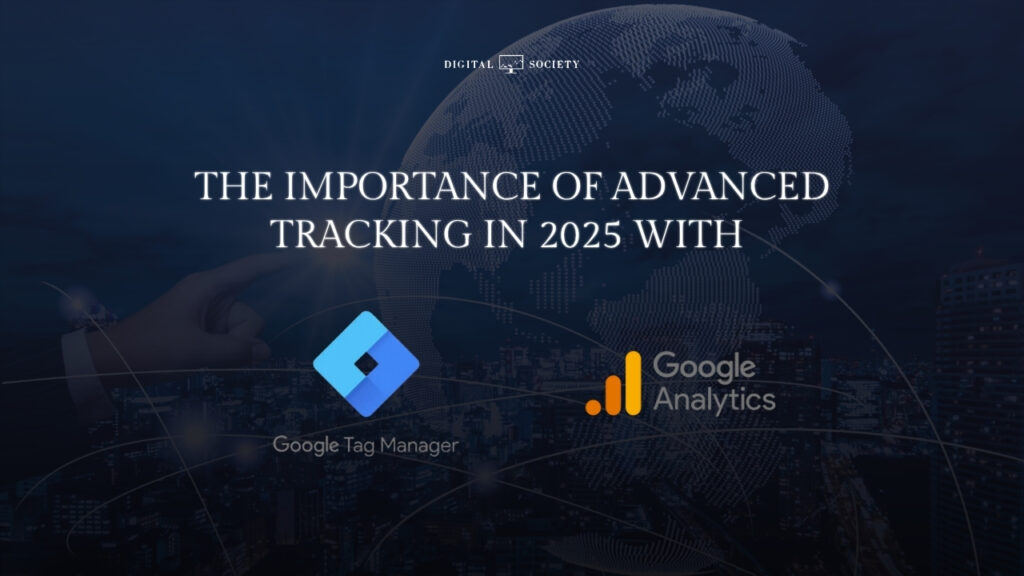Tracking is one of the most crucial elements for any modern business that wants to succeed online. In today’s fast-paced digital landscape, companies that rely solely on intuition or guesswork often miss out on opportunities for growth. Every click, scroll, form submission, or purchase tells a story about your audience — and without proper tracking, that story remains untold. By implementing Google Tag Manager (GTM) and Google Analytics 4 (GA4), businesses can unlock the full potential of their data, turning it into actionable insights that drive growth, improve marketing performance, and maximize ROI.
Many companies still struggle with collecting the right data in a manageable way. Traditional analytics often focus only on pageviews, leaving out key interactions that influence customer behavior. With GTM, businesses can easily manage multiple tracking codes from a single dashboard.
In conclusion, tracking through GTM and GA4 is no longer optional

1. Understanding the Power of Tracking
Tracking is not just about collecting numbers — it’s about understanding user behavior.
Every click, scroll, or purchase tells a story about what your audience needs and how they interact with your website.
By implementing tracking correctly, you can answer questions like:
- Where do most of your customers come from?
- Which campaigns drive the most conversions?
- What pages make users stay or leave your site?
With these insights, your business can make smarter marketing decisions, reduce costs, and increase profitability.
2. Why Google Tag Manager (GTM) Is Essential
Google Tag Manager simplifies the process of adding tracking tags to your website — without needing to edit the code every time.
You can manage tags for:
- Google Ads conversions
- Meta (Facebook) Pixels
- LinkedIn Insights
- GA4 events
- Hotjar or TikTok Pixels
All from one clean dashboard.
This means faster testing, cleaner implementation, and less dependency on developers.
In short: GTM is your control center for all data tracking activities.
3. Google Analytics 4: The Future of Data
Google Analytics 4 (GA4) is the evolution of traditional analytics.
Unlike the old Universal Analytics, GA4 focuses on user-based tracking and events, not just page views.
This allows businesses to:
- Follow the entire customer journey across devices
- Measure micro-conversions (form fills, video views, scrolls, etc.)
- Understand engagement and retention better
- Use AI-driven insights for smarter predictions
GA4 helps you see what truly drives revenue, not just what brings traffic.
4. How Tracking Improves Business Strategy
When you connect GTM and GA4 correctly, you unlock the ability to:
- Measure the real ROI of your ads
- Identify high-performing audiences
- Optimize your landing pages and user experience
- Automate reporting for better decision-making
For example, instead of guessing which ad works, you can know which campaign generated the most qualified leads and why.
That knowledge lets you reinvest confidently and scale faster.
5. Beyond Numbers: Building a Data-Driven Culture
Data is only powerful when used.
The tools like GTM and GA4 allow your business to move from assumptions to action.
When every team — from marketing to sales — uses data to make decisions, your business becomes more efficient, more creative, and more profitable.
You stop wasting time guessing and start focusing on what really matters: growth.
6. Ready to Track Smarter?
If you’re ready to take control of your business data, it’s time to set up GTM and GA4 properly.
From tracking conversions to analyzing user journeys, the right tracking setup can transform the way your brand performs online.
At Digital Society, we specialize in 360° marketing strategies, including advanced tracking systems that help you see, understand, and grow your impact.
✅ In short:
“You can’t improve what you don’t measure — and with GTM + GA4, you can measure everything that matters.”





